When it comes to adding a touch of royalty and sophistication to your indoor space, purple houseplants are an excellent choice. With their captivating hues and stunning foliage, these plants can turn any corner of your home into a vibrant oasis.
Why choose purple houseplants?
Choosing purple houseplants can be a compelling choice for indoor gardening due to their elegant aesthetic, eye-catching focal points, versatile color options, unique foliage, ease of care, air purification benefits, space-saving options, and the potential to serve as conversation starters while promoting creativity and symbolizing spiritual growth and inner peace in your living spaces.
Best purple houseplants
1. Purple passion plant (gynura aurantiaca)
With its fuzzy, deep purple leaves and vibrant lime-green undersides, the Purple Passion Plant is a showstopper. This trailing plant looks stunning in hanging baskets or cascading from a shelf, and it’s relatively easy to care for, making it a favorite among both beginners and experienced plant enthusiasts.
2. Persian shield (strobilanthes dyerianus)
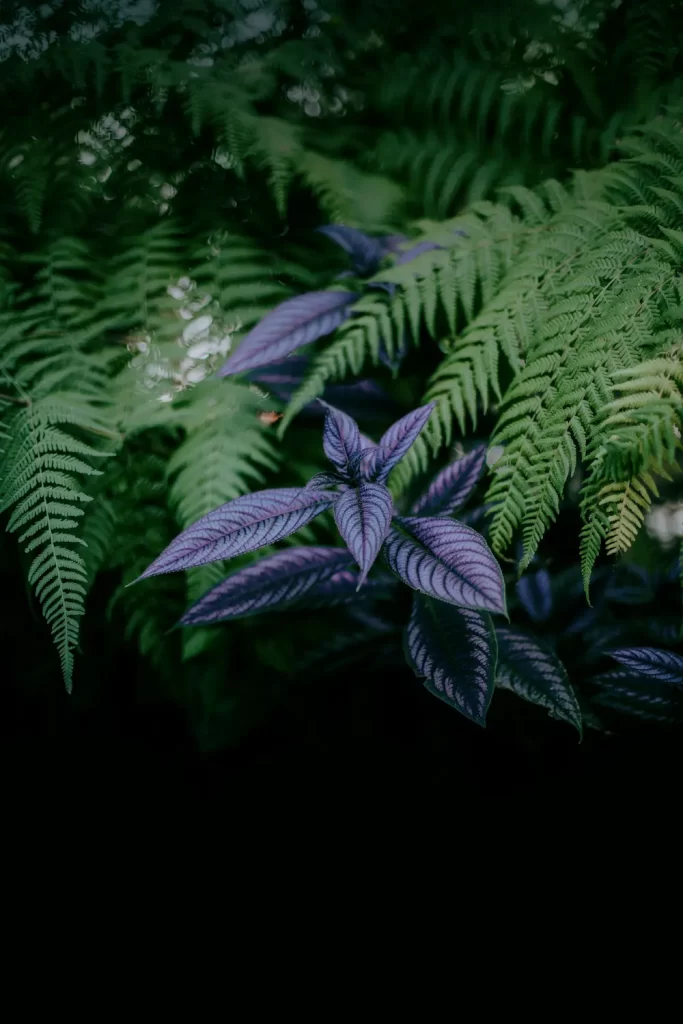
The Persian Shield is known for its iridescent, metallic purple leaves with green veining. This striking foliage plant is a popular choice for adding a splash of color to any room. It prefers bright, indirect light and thrives in humid environments.
3. African violet (saintpaulia spp.)
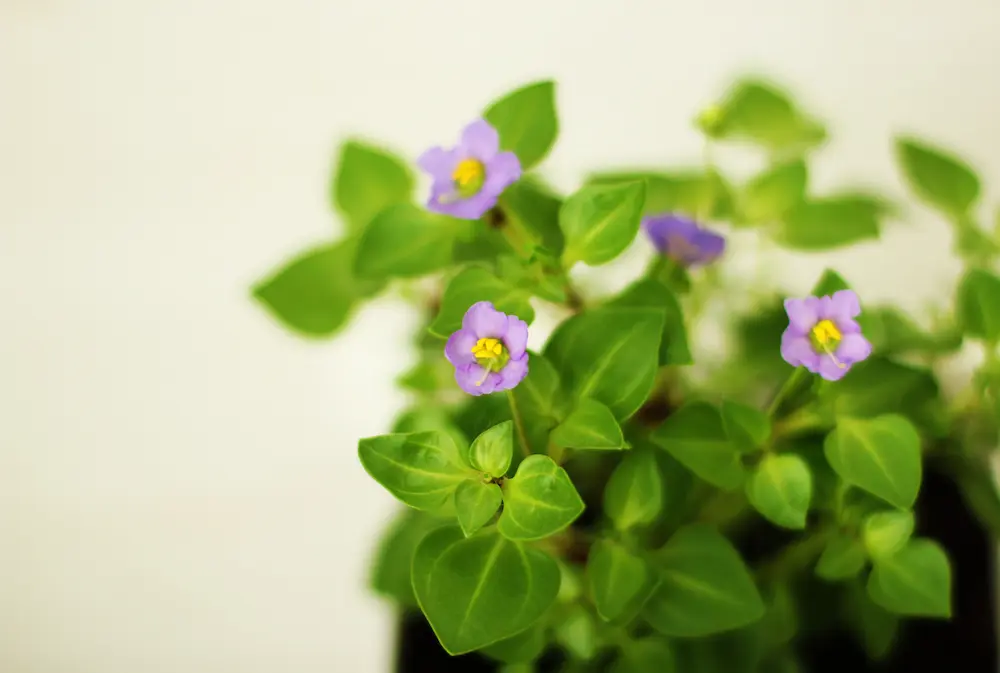
A classic choice for indoor gardening, African Violets are beloved for their delicate, dainty flowers and rich purple color options. They prefer filtered light and require regular watering to keep their soil consistently moist.
4. Wandering jew (tradescantia zebrina)
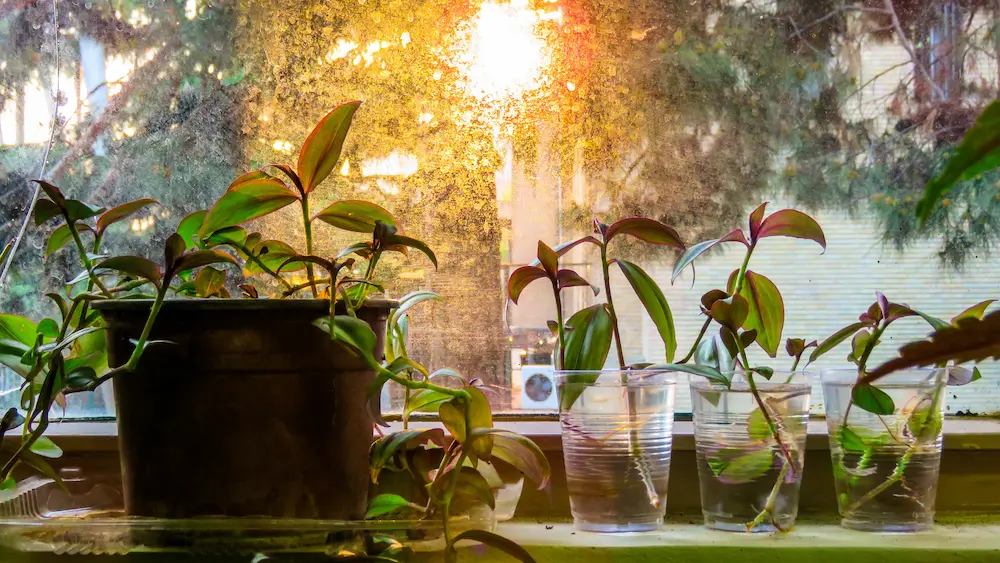
This vibrant purple houseplant is easy to care for and can tolerate a variety of light conditions, making it a versatile addition to any space. Its striking purple and silver-striped leaves add a touch of drama to your indoor jungle.
5. Coleus (solenostemon scutellarioides)
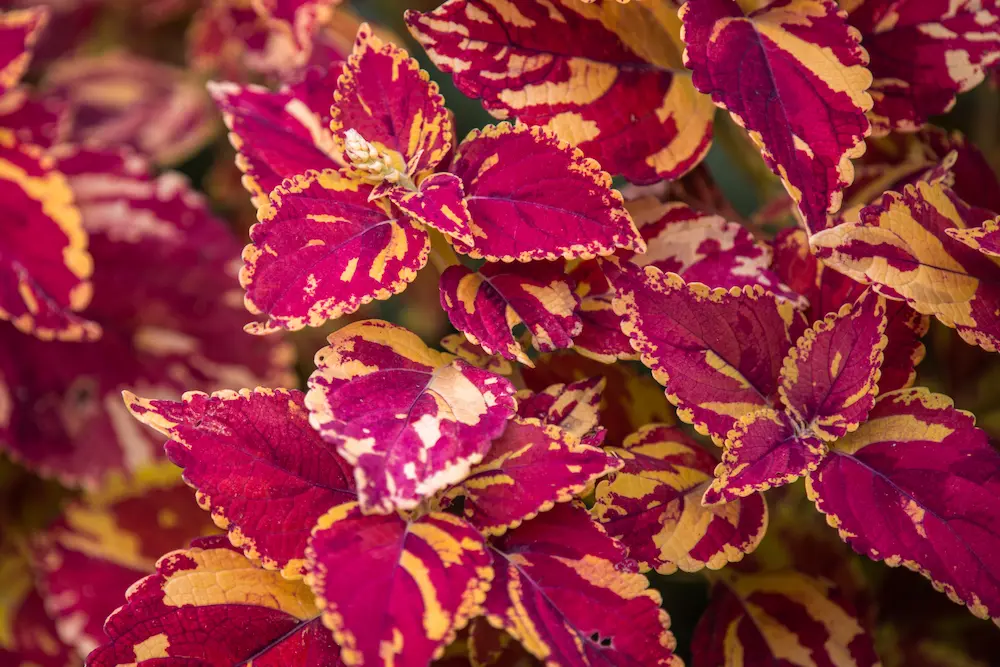
Though Coleus plants come in a wide range of colors, the deep purple varieties are particularly captivating. These colorful foliage plants can be grown both indoors and outdoors, as long as they receive adequate light and moisture.
6. Purple shamrock (oxalis triangularis)
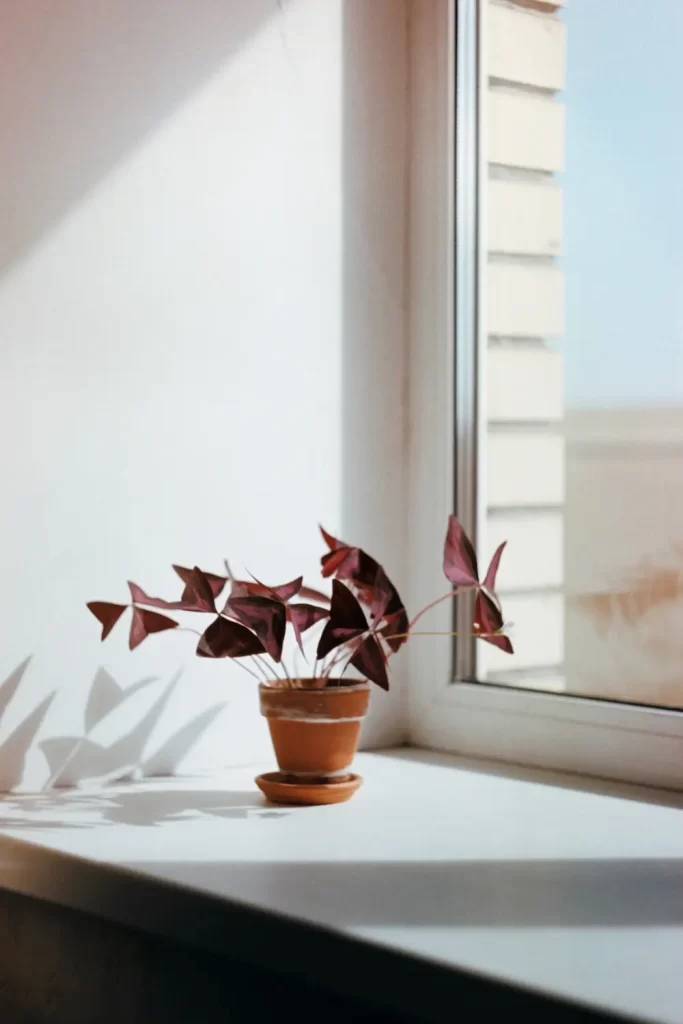
Also known as the Love Plant, the Purple Shamrock boasts heart-shaped, deep purple leaves that open and close in response to light levels. This charming plant brings a unique touch to any room and is relatively easy to care for.
7. Purple velvet plant (gynura sarmentosa)
The Purple Velvet Plant is aptly named for its velvety, purple leaves that have a rich texture. It enjoys bright, indirect light and moderate watering, making it a striking addition to your indoor plant collection.
8. Purple heart (tradescantia pallida)
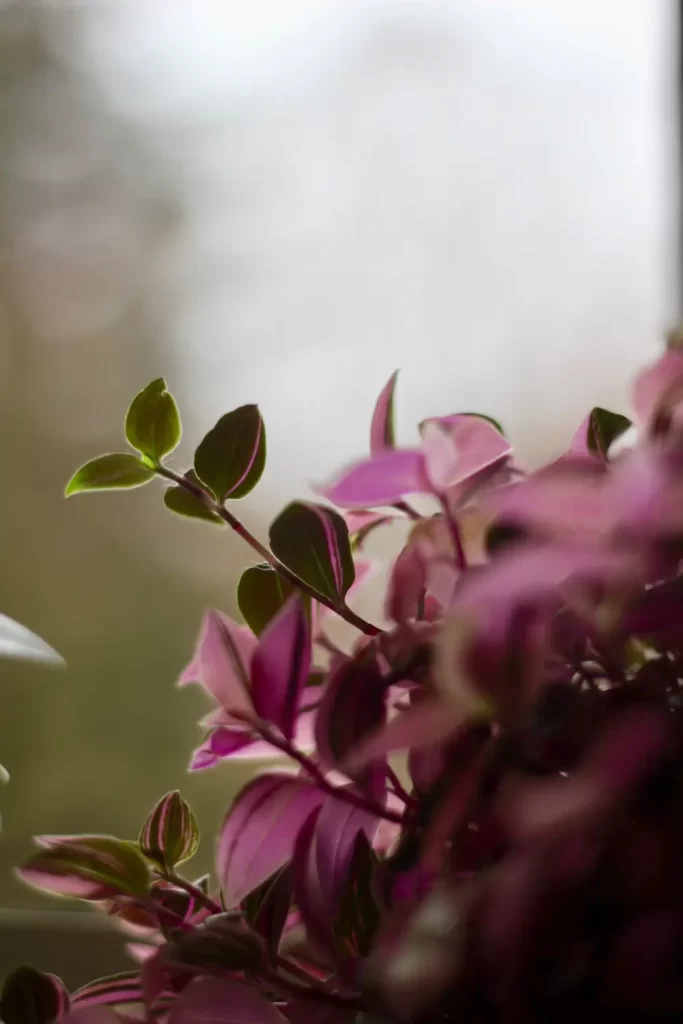
Another member of the Tradescantia family, the Purple Heart features lance-shaped purple leaves that add a pop of color to any setting. This resilient plant can tolerate neglect and grows well in a variety of conditions.
9. Purple orchid (orchidaceae family)
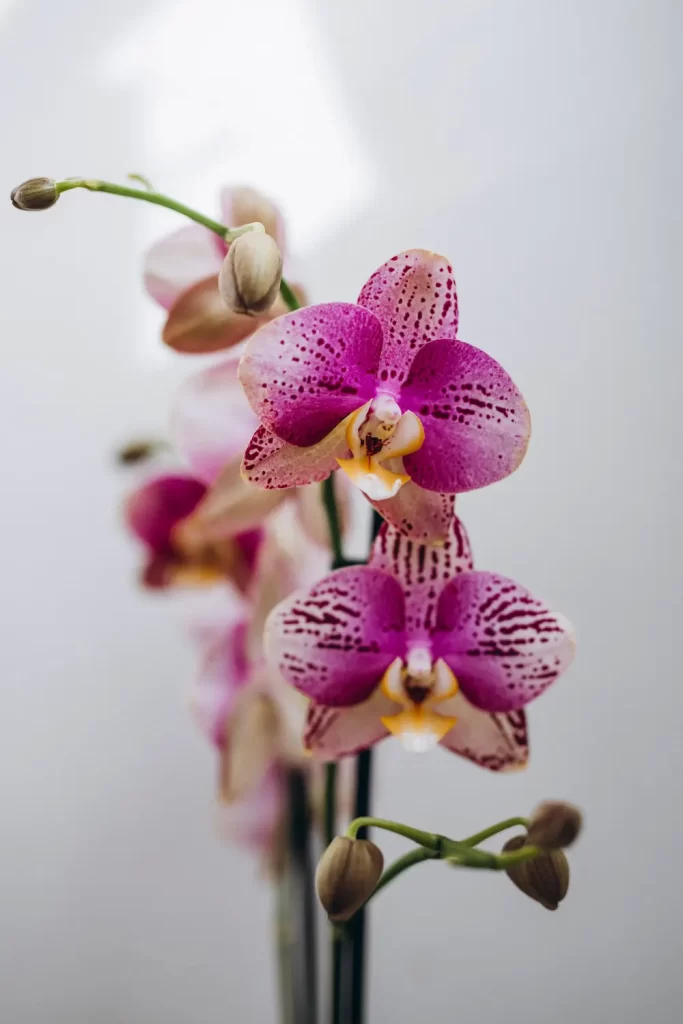
Orchids are renowned for their exquisite beauty, and purple orchids are no exception. These elegant blooms add a touch of luxury to your home and, with the right care, can bloom for several months.
10. Calathea (calathea spp.)
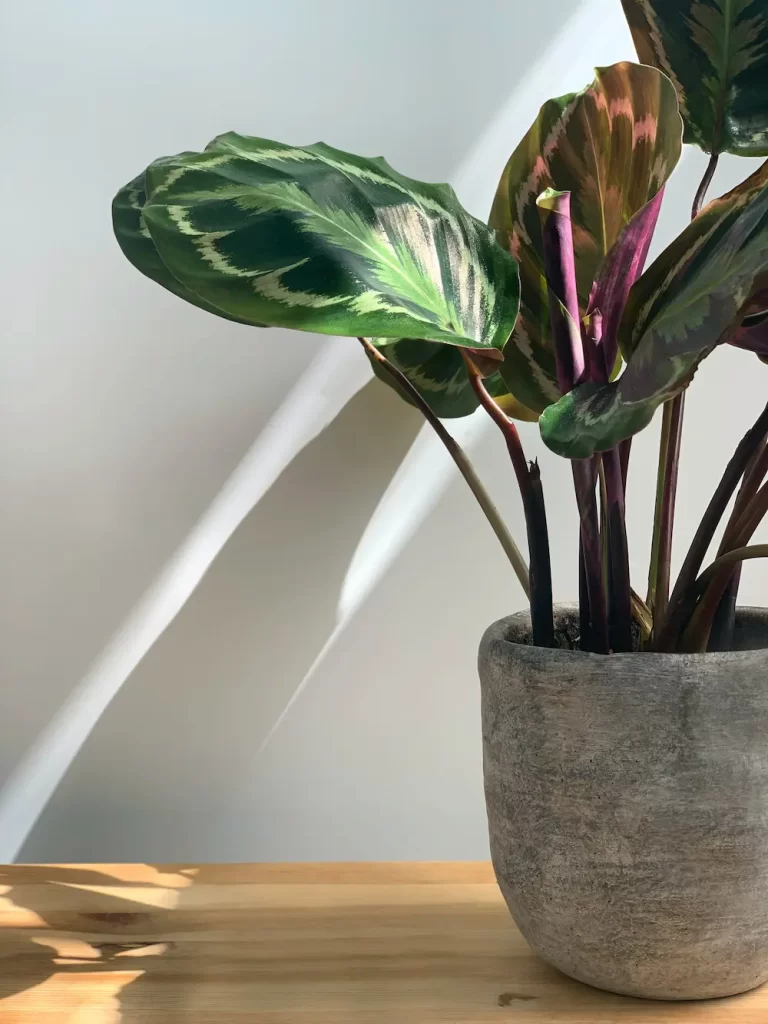
Calatheas are known for their stunning foliage, and the purple varieties are no exception. With their intricate patterns and deep purple undersides, they make a captivating addition to your indoor garden. Keep them away from direct sunlight and maintain humidity for their optimal growth.
11. Purple-leaf shamrock (oxalis regnellii)
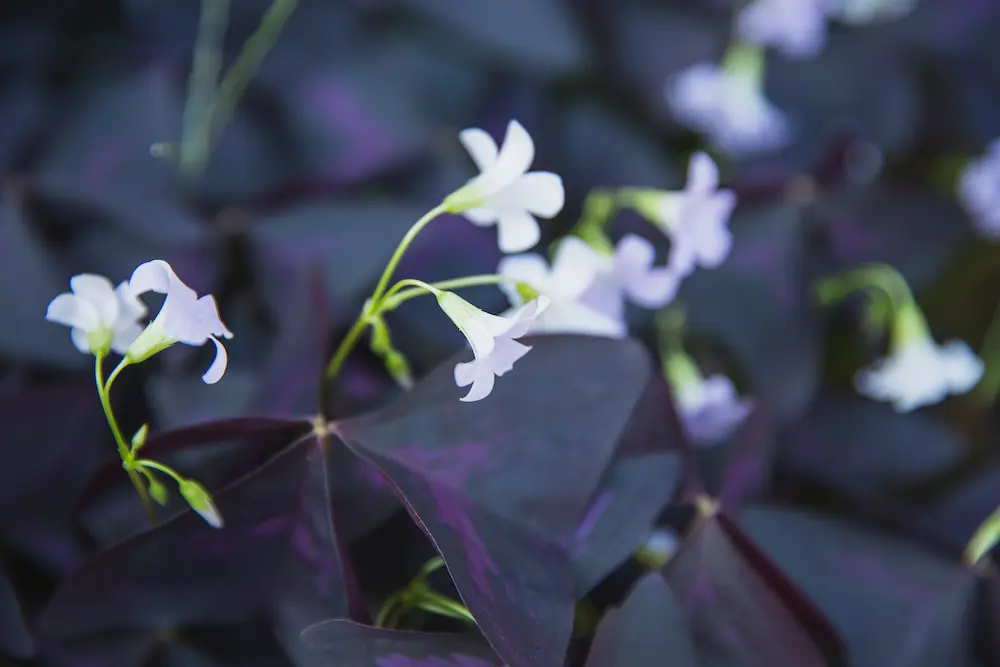
The Purple-Leaf Shamrock is another delightful Oxalis species, featuring rich purple leaves that contrast beautifully with delicate pink flowers. It’s a compact plant that looks fantastic in small pots or as part of a larger arrangement.
12. Purple basil (ocimum basilicum)
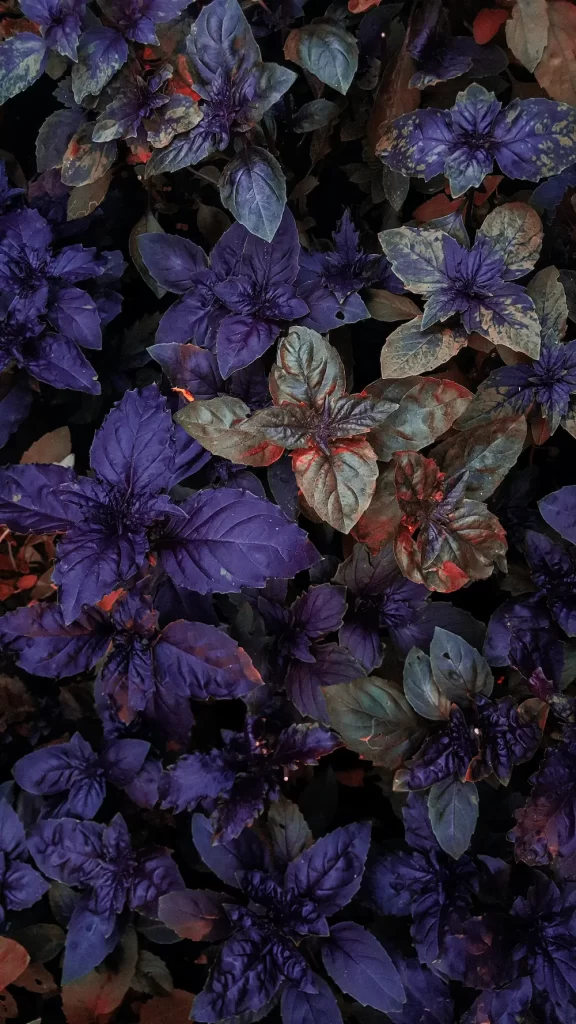
Not just a feast for the eyes, Purple Basil adds a delightful aroma and flavor to your culinary endeavors. This purple-leafed herb looks fantastic on a sunny windowsill in the kitchen and can be easily harvested for use in various dishes.
13. Purple pixie (nephrolepis exaltata)
The Purple Pixie is a compact, miniature version of the traditional Boston Fern with striking, deep purple fronds. This easy-to-care-for fern makes a wonderful addition to terrariums or small pots on shelves.
14. Purple prayer plant (maranta leuconeura)
The Purple Prayer Plant boasts eye-catching purple veining on its leaves, adding to its already stunning appearance. It’s a low-maintenance plant that prefers moderate light and regular misting to maintain humidity.
15. Purple haze (setcreasea pallida)
As its name suggests, the Purple Haze features long, trailing purple stems adorned with lance-shaped leaves. This resilient plant can thrive in a range of conditions and looks fabulous in hanging baskets.
FAQs about purple houseplants
1. Are purple houseplants difficult to care for?
Not necessarily. While some purple houseplants may have specific care requirements, many are relatively easy to care for, making them suitable for beginners and experienced plant enthusiasts alike. As with any plant, it’s essential to understand the specific needs of each variety and provide them with the right amount of light, water, and humidity.
2. Can purple houseplants survive in low-light conditions?
Some purple houseplants, like the Wandering Jew and Purple Heart, can tolerate lower light conditions. However, most purple houseplants thrive in bright, indirect light. If your home has limited natural light, consider placing them near windows with filtered light or supplementing with artificial grow lights.
3. Do purple houseplants require special fertilizers for their coloration?
In most cases, the purple coloration of the foliage in these plants is naturally occurring and doesn’t require special fertilizers to maintain. Regular, balanced houseplant fertilizers are usually sufficient to keep them healthy and vibrant.
4. Can I grow purple houseplants in my garden or only indoors?
While many purple houseplants are suitable for indoor gardening, some can also be grown outdoors, depending on your climate. Make sure to check the specific needs of each plant, including temperature tolerance, before deciding to grow them in your garden.
5. Are purple houseplants safe for pets and children?
While most purple houseplants are non-toxic, it’s essential to research the toxicity level of each specific plant before bringing it into a home with pets or young children. Some plants may cause mild gastrointestinal discomfort if ingested, so it’s always best to err on the side of caution and keep them out of reach of curious pets and kids.
6. How often should I water my purple houseplants?
The watering frequency for purple houseplants varies depending on the species, pot size, and environmental conditions. Always check the moisture level of the soil before watering and ensure that it’s neither bone dry nor overly soggy. It’s generally better to underwater than overwater, as excessive moisture can lead to root rot.
7. Can I propagate purple houseplants easily?
Yes, many purple houseplants are relatively easy to propagate through methods like stem cuttings or division. Propagation can be a rewarding way to expand your collection or share your favorite plants with friends and family.
8. Will my purple houseplant produce flowers?
While some purple houseplants are grown primarily for their foliage, others, like African Violets and purple orchids, are known for their beautiful flowers. Providing the right growing conditions and care can encourage flowering in these plants.
9. How do I prevent pests from infesting my purple houseplants?
Regularly inspect your plants for signs of pests such as aphids, mealybugs, or spider mites. Quarantine any new plants before introducing them to your existing collection. Practicing good hygiene, such as removing dead leaves and debris, and periodically wiping down leaves can help prevent pest infestations.
10. Can I mix and match different purple houseplants in the same arrangement?
Absolutely! Mixing and matching different purple houseplants can create a visually stunning display with varying shades and textures. Just ensure that the plants you choose have similar light and water requirements to maintain their health and appearance.
P.S. Want to learn more about houseplants? Check out the top 15 pet-friendly houseplants.





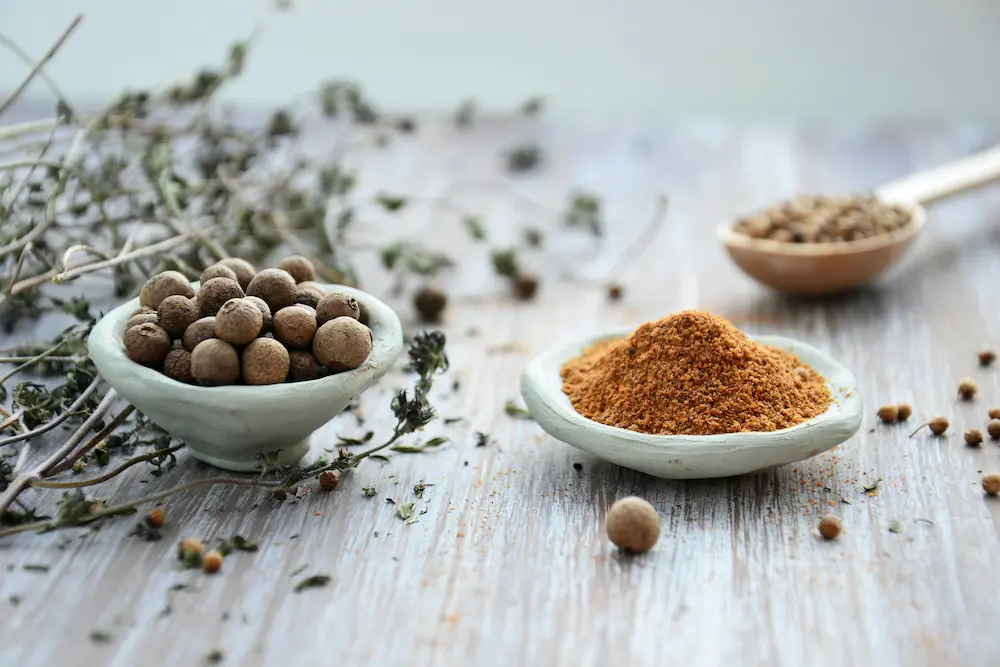
Leave a Reply